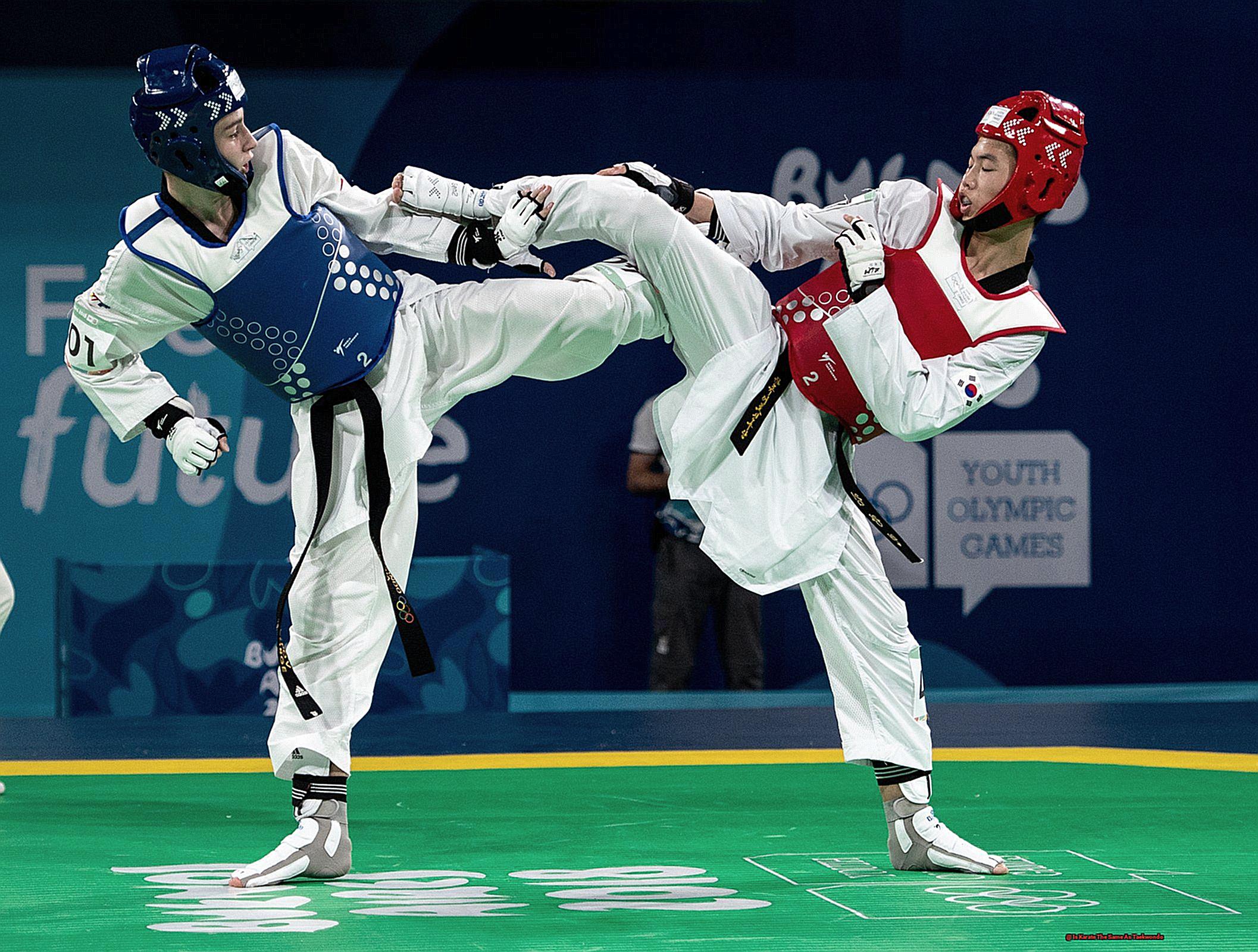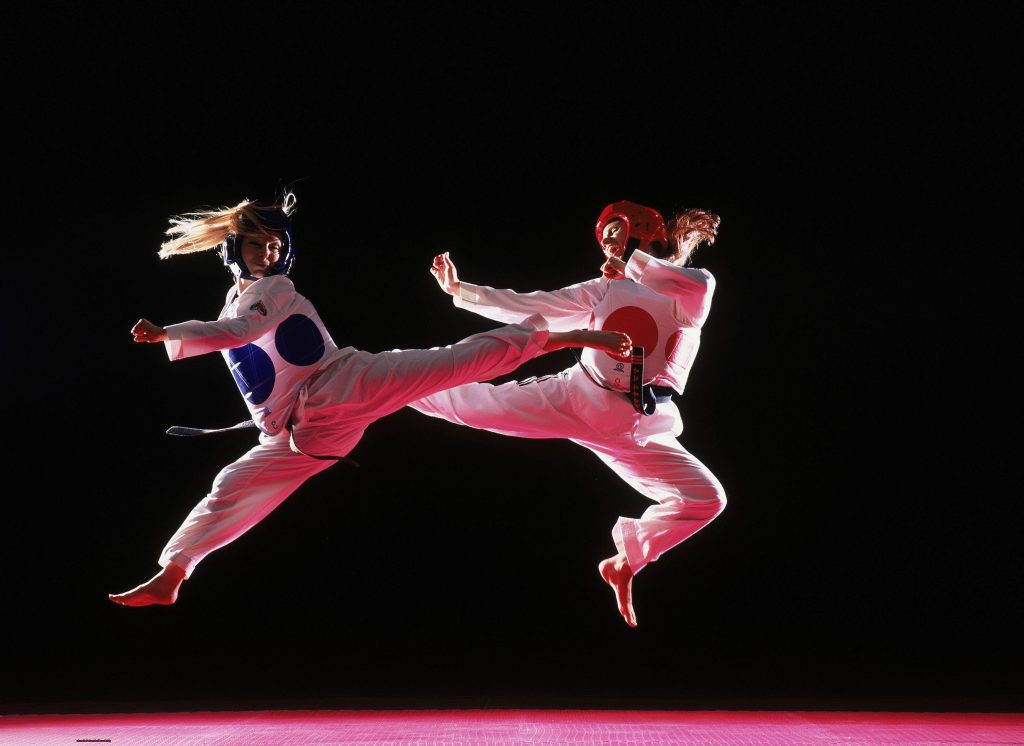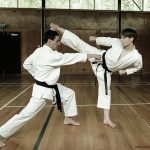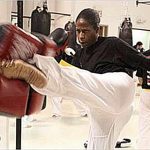Are you ready to embark on a journey into the world of martial arts? Look no further than karate and taekwondo – two popular disciplines that have captured the hearts and minds of individuals worldwide. While both involve striking techniques and a strong emphasis on discipline and self-defense, these two styles have unique differences that distinguish them from one another. So, whether you’re a beginner seeking to start your path or an experienced practitioner looking to expand your skills, let’s delve into the similarities and contrasts between karate and taekwondo. Here are some key points to consider:
- Originating in East Asia – karate in Japan and taekwondo in Korea.
- Karate focuses on powerful strikes using hands, feet, knees, and elbows while taekwondo emphasizes high kicks.
- Traditional elements such as katas (forms) are prominent in karate while taekwondo incorporates more modern aspects like sparring.
- Both styles promote physical fitness, mental discipline, and character development.
Whether you gravitate towards the “hard” style of karate or the “soft” style of taekwondo, there’s something for everyone in these dynamic martial arts. So come join us as we embark deeper into the world of karate and taekwondo.
A Brief History of Karate – Exploring the Origins of this Martial Art
Karate and taekwondo are two popular martial arts with distinct origins, techniques, and philosophies. Despite both involving striking techniques, they have different histories and should not be confused as the same martial art.
Origins:
Karate traces back to Japan in the 14th century, where it developed as a fusion of various martial arts styles. Its evolution on the island of Okinawa was influenced by Chinese martial arts. Meanwhile, taekwondo was created in Korea in the 1940s as a unique Korean martial art.
Techniques:
The techniques used in karate and taekwondo differ in their focus and intensity. Karate emphasizes powerful hand strikes, while taekwondo highlights high kicks and quick footwork. The goal of karate techniques is to disable an opponent with one strong strike, while taekwondo techniques prioritize speed and agility for multiple fast strikes.
Competition:
In karate competitions, participants showcase predetermined movements in form or kata performances. On the other hand, taekwondo competitions involve full-contact sparring matches where practitioners earn points using their techniques.
Belt Ranking System:
Both karate and taekwondo have belt ranking systems to measure progress and skill level. However, the colors and order of belts differ between the two disciplines. In karate, the most common progression is from white to black belt, while in taekwondo it is from white to red belt and then to black belt.
Philosophy:
Karate emphasizes self-defense and discipline, with a strong focus on physical and mental strength. On the other hand, taekwondo places great importance on respect, self-control, and moral values.
In conclusion, while karate and taekwondo share some similarities in terms of physical techniques, they are two distinct martial arts with different origins, techniques, approaches to competition, and philosophies.
Origins and Evolution of Taekwondo – Tracing the Development of this Martial Art
Taekwondo originated from the fusion of Japanese karate and other Korean martial arts. During the early 20th century, when Korea was under Japanese rule, many Koreans were forced to learn Japanese martial arts, including karate. After World War II, nine prominent schools, known as kwans, were established in South Korea by Korean martial artists who had trained in Japan. These kwans were heavily influenced by Japanese karate but also incorporated elements of traditional Korean martial arts such as taekkyon and subak.
In 1959, these kwans united to form a unified martial art called Taekwondo, which means “the way of the foot and fist.” This name reflected the emphasis on kicking techniques, which were favored by many Korean martial artists. However, it wasn’t until the 1960s and 1970s that taekwondo truly began to evolve into its own distinct martial art.
One significant development in this evolution was the introduction of a new competition format in 196This caused tension among first-generation instructors who felt that the new format deviated too far from traditional techniques. As a result, three major factions emerged within the International Taekwondo Federation (ITF), each with their own interpretation of taekwondo.
In 1971, the South Korean government declared taekwondo as their national sport and provided funds to build Kukkiwon, which would serve as the central gymnasium for taekwondo worldwide. Kukkiwon continued to develop taekwondo as an art form, while the newly formed World Taekwondo Federation (WTF) focused on promoting it as a sport.
Today, taekwondo is recognized as an official Olympic sport and is practiced all over the world. While it may have evolved from karate, it has developed its own unique techniques, philosophy, and identity as a martial art.
The Origins and Evolution of Taekwondo – Tracing the Development of this Martial Art
Taekwondo, a martial art that has captured the attention of people worldwide, has a fascinating history. It emerged from the combination of Japanese karate and traditional Korean martial arts, taekkyon and subak. During the Japanese occupation of Korea in the early 20th century, Koreans were forced to learn Japanese martial arts, including karate. However, after World War II, nine prominent kwans were formed in South Korea by Korean martial artists who had trained in Japan. These kwans heavily relied on Japanese karate techniques but also incorporated elements of traditional Korean martial arts.
In 1959, these kwans united to form a unified martial art called Taekwondo. The name itself reflects the emphasis on kicking techniques, which were favored by many Korean martial artists. However, it wasn’t until the 1960s and 1970s that taekwondo truly began to evolve into its own distinct martial art.
Karate vs Taekwondo: Uncovering the Shared Traits and Distinctive Features of
Karate and taekwondo share several traits and characteristics, yet they also possess distinct features that set them apart.
These include comparable attire and belt systems, a focus on self-protection, origins in Asia, and diverse forms or styles within the art. However, there are also notable differences, such as the emphasis on quick footwork in taekwondo and the equal emphasis on all limbs in karate.
Both disciplines have found a place in modern MMA, yet they each offer unique strengths and techniques.

Speed vs Power: Analyzing the Dynamics of Karate and Taekwondo
Karate and taekwondo have distinct approaches to speed and power in their techniques and training methods. Karate prioritizes precise and efficient execution of forceful strikes, while taekwondo places emphasis on explosive movements and swift kicks. These distinctions are evident in the origins, foundations, and training techniques of each discipline.
As a martial arts enthusiast, I have experienced firsthand the unique styles of karate and taekwondo. In karate, I learned the importance of calculating my movements before executing them with precision and power. It required patience, discipline, and a strong focus on technique to deliver a powerful strike with maximum impact. On the other hand, in taekwondo, I was taught to use swift and agile movements to deliver swift yet powerful kicks. It required explosive energy and quick reflexes to execute these techniques effectively.
The differences in approach between karate and taekwondo can be traced back to their origins. Karate originated from Okinawa, Japan, where it was developed as a form of self-defense against armed attackers. As a result, it focused on delivering powerful strikes to quickly incapacitate an opponent. In contrast, taekwondo originated from Korea and was heavily influenced by other martial arts such as Chinese kung fu. Its emphasis on swift kicks reflects its origins as a form of unarmed combat against armed enemies.
Furthermore, the training methods of karate and taekwondo also differ greatly. In karate, practitioners often use heavy bags or targets to develop power in their strikes. The repetitive nature of these exercises leads to higher levels of burstiness as they intersperse short bursts of power with brief periods of rest. In contrast, taekwondo practitioners utilize more fluid movements in their training, emphasizing speed and agility rather than brute force.
Flexibility vs. Stability: Understanding the Balance in Karate and Taekwondo
The balance between flexibility and stability in Karate and Taekwondo differs due to their unique origins, techniques, and training methods. While Karate, originating in Japan, prioritizes strength and stability, as seen in its defensive techniques and stances, Taekwondo, originating from Korea, places more emphasis on fluid movements and flexibility, evident in its dynamic training methods and acrobatic kicks. However, both martial arts incorporate a blend of both flexibility and stability, with the balance varying depending on the specific style or school of training. Ultimately, the key is for individuals to find a style that best suits their physical abilities and goals.
In order to truly excel in either Karate or Taekwondo, one must understand the delicate balance between flexibility and stability. This balance is crucial in not only mastering the techniques of these martial arts but also in perfecting one’s overall performance. It is this understanding that separates the average practitioner from the true masters of their craft.
For many students of Karate or Taekwondo, the concept of maintaining a balance between flexibility and stability can be challenging to grasp. However, through consistent practice and dedication, it becomes second nature. Just like riding a bike or playing an instrument, it takes time and effort before it becomes effortless.
Take for example the story of a young Karate student named John. John had always been fascinated by martial arts and was determined to become a black belt in Karate one day. He struggled with finding the right balance between flexibility and stability until his instructor shared a story about a bamboo tree. The bamboo tree’s roots were firmly planted in the ground, providing stability, while its branches swayed gracefully in the wind, showcasing its flexibility. This analogy helped John understand the importance of finding a balance between these two essential elements in martial arts.
Similarly, finding this balance can also be challenging for Taekwondo practitioners. However, through years of training and dedication, they learn to strike the perfect balance, becoming masters of their craft. Just like the bamboo tree, they are strong and stable yet flexible and fluid in their movements.
karate vs taekwondo: Which is better for self-defense
When discussing self-defense techniques, it’s important to note the distinct differences between Karate and Taekwondo, as they each have their own unique styles and focuses. As a traditional martial art, Karate places a strong emphasis on practical application and self-defense techniques. It teaches students how to effectively strike and defend themselves in real-life situations.
On the other hand, Taekwondo is more geared towards competition and emphasizes speed and agility over practical self-defense techniques. Its techniques often involve high kicks and quick movements, which may not be as useful in real-life situations.
To better understand the differences between the two styles, let’s break down their key elements in terms of self-defense techniques:
| Elements | Karate | Taekwondo |
| Focus | Practical application and self-defense | Competition and sparring |
| Techniques | Hand strikes, punches, kicks, blocks, joint locks, and throws | Kicks, footwork, fast strikes, and quick movements |
| Stances | Solid and rooted stances for power and stability | Mobility-focused stances for speed and agility |
| Training | Emphasizes strength, power, and endurance training | Focused on flexibility, speed, and agility training |
As shown above, Karate’s focus on practical application makes it more effective in real-life self-defense situations. Its techniques are designed to quickly disable an attacker with powerful strikes to vital points on the body. Additionally, Karate training also includes joint locks and throws, which can be useful in subduing an attacker without causing serious harm.
On the other hand, Taekwondo’s emphasis on competition and sparring may not translate as well to real-life self-defense situations. Its high kicks and fast strikes may not be feasible in close-quarters or multiple attacker scenarios. However, Taekwondo training can improve one’s overall physical fitness and coordination, which can be beneficial in self-defense situations.
Taekwondo vs Karate for Fitness: Benefits and Differences of the two martial arts
Taekwondo and karate provide a variety of physical and mental advantages for improving fitness. However, these two martial arts differ significantly in terms of methods, discipline, and techniques. Let’s delve deeper into the specific benefits and differences of incorporating taekwondo and karate into your fitness routine.
Both taekwondo and karate focus on developing physical strength, flexibility, and balance through various training methods such as forms, sparring, and drills. However, taekwondo emphasizes explosive, high kicks while karate focuses on powerful strikes and punches. This difference in techniques allows individuals to choose a martial art that aligns with their physical abilities and goals.
In terms of discipline, taekwondo places a strong emphasis on self-control, respect, and perseverance. The belt system in taekwondo also serves as a visual representation of an individual’s progress and dedication. On the other hand, karate places more importance on mental discipline, incorporating meditation and breathing exercises into training to develop focus and concentration.
When it comes to training methods, taekwondo often involves repetitive movements and patterns to develop muscle memory while karate focuses on practical application through partner work and self-defense scenarios. This difference in training styles allows individuals to choose a martial art that suits their learning style and preferences.
Both taekwondo and karate offer numerous physical benefits such as improved cardiovascular health, increased strength and flexibility, and enhanced coordination. Mentally, both martial arts promote discipline, focus, and confidence. Ultimately, the choice between taekwondo and karate for fitness boils down to personal preference and goals.
So, while both taekwondo and karate have their unique strengths and differences, they both offer valuable physical and mental benefits for fitness.
Conclusion
In conclusion, while karate and taekwondo may seem similar at first glance, they are in fact two distinct martial arts with their own unique characteristics.
From their origins to their attire and focus on self-protection, these disciplines share commonalities. However, when it comes to techniques, competition formats, belt ranking systems, and philosophies, they differ greatly.
While karate emphasizes powerful strikes using various body parts, taekwondo showcases high kicks and quick footwork. Both styles promote physical fitness, mental discipline, and character development.
Whether you prefer the “hard” style of karate or the “soft” style of taekwondo, these dynamic martial arts offer something for everyone. So why not embark on a journey into the world of karate and taekwondo?
With their rich histories and diverse training methods focused on speed vs power and flexibility vs stability, these disciplines have captured the hearts and minds of individuals worldwide.






